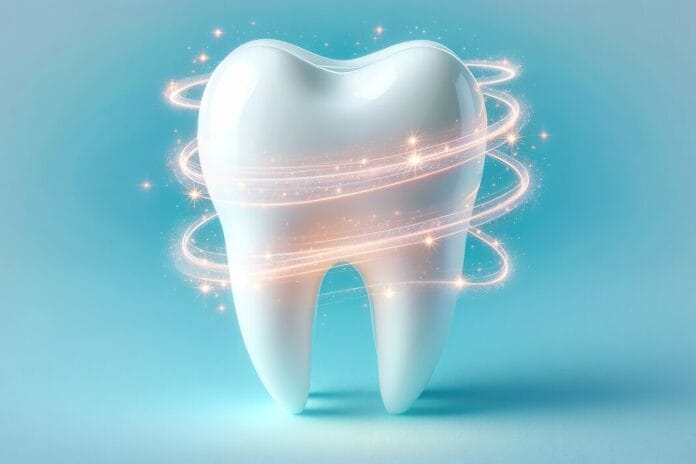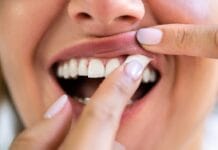During the 1966 opening ceremony of the Third Conference on Oral Biology, Professor Leslie Hardwick warned participants of the need to rapidly disseminate new information in the scientific world. Today, more than fifty years later, the internet and multitudes of journals have enabled the fast exchange of information while inadvertently creating information overload and the inability of many to stay current.1
In an era of rapidly evolving dental science, staying informed about the latest evidence-based research is crucial for dental hygienists. Advancements in tooth remineralization research are producing innovative materials that have the potential to enhance oral health care practices significantly.
Dental hygienists play a pivotal role in patient education and care. Being well-versed in the primary mechanism of action and current American Dental Association (ADA) guidelines based on the efficacy of remineralization agents ensures the highest standard of care. It also empowers professionals to make informed recommendations tailored to individual patient needs.
Dental Enamel Demineralization and Remineralization
Regenerative dentistry has pushed mainstream dentistry to further dental research and integrate scientific discoveries into future treatments. The approach is based on understanding the underlying mechanisms of tooth development and the biological healing and repair processes. This research has resulted in a solid understanding of principles that could be applied to maximize the inherent healing potential of dental tissues.2
Dental enamel is an acellular, hard, avascular tissue consisting of 96% inorganic (hydroxyapatite nanocrystals), 3% water, and 1% organic components. The enamel protein matrix is produced by ameloblasts and mineralized by calcium phosphate crystals. The function of enamel is to protect dentin and pulp from thermal shock, mechanical stress, chemical corrosion, and bacterial infection. Physiologically balanced saliva has a pH between 6.5 and 7.4, which means it is supersaturated with calcium and phosphate ions, and demineralization does not occur.2
Acid-producing bacteria such as Streptococcus mutans and acids from food or drink lower salivary pH. When pH falls below 5.5, the concentration of phosphate ions in saliva decreases, and hydroxyapatite crystals begin to dissolve. The gradual dissolution of hydroxyapatite crystals in enamel results in the loss of tooth tissue, leading to caries and dentinal sensitivity.2
Remineralization is a process of natural repair mechanisms that restores the minerals in ionic forms to the hydroxyapatite lattice. It occurs under near-neutral physiological pH conditions, where calcium and phosphate mineral ions are re-deposited within the caries lesion from saliva and plaque fluid, forming newer crystals that are larger and more resistant to acid dissolution.3
Saliva’s Role in Remineralization
Saliva acts as a carrier for essential ions such as fluoride, calcium, and phosphate and has a buffering capacity to neutralize the oral cavity’s low pH generated after acid challenges, which aids in remineralization. Enamel and saliva are two primary participants in ionic substitution in the oral cavity.4
The 3% water content present in enamel facilitates the influx of acids and efflux of minerals, causing demineralization. Calcium phosphate embedded in salivary pellicles has an almost ten times higher solubility than in tooth structure. It serves as a sacrificial mineral post-acid attack instead of calcium phosphate from the tooth structure, which helps prevent demineralization.4
Salivary proteins such as proline-rich proteins, statherins, and histatins are attracted to the enamel surface, and help remineralize by increasing local calcium concentrations. Salivary enzymes like lysozyme help in the lysis of bacterial acids and are highly effective against gram-positive bacteria. Lysozyme also helps to prevent bacterial aggregation and adherence.4
Common Remineralization Agents
An ideal remineralizing agent should diffuse into the tooth structure subsurface and deliver calcium and phosphate without excess calcium. It should not promote calculus formation and needs to work at an acidic pH. The product should work for patients with xerostomia and boost saliva’s remineralization properties.3
Recent advances in remineralization therapies are divided into two systems: biomimetic regenerative technology and systems that boost fluoride effectiveness.3,4
Fluoride
Remineralization with fluoride is accomplished by incorporating fluoride into the tooth substructure by replacing or displacing hydroxyl ions. Ca-F covalent bonds and OH-F hydrogen bonds are formed, and the unit cell volume of the apatite is reduced, increasing dental enamel’s hardness and acid resistance. Fluoride ions act as antibacterial agents and inhibitors of the bacterial enzyme enolase, resulting in reduced acid production by bacteria.2,5
Brushing with fluoride toothpaste increases fluoride concentration in saliva 100 to 1000 times. After one to two hours, salivary concentration returns to baseline.5
Fluoride mechanism of action:3
- Fluoride inhibits demineralization, as the fluorapatite crystals, formed by a reaction with enamel apatite crystals, are more resistant to acid attack than hydroxyapatite crystals.
- Fluoride enhances remineralization as it speeds up the growth of new fluorapatite crystals by bringing calcium and phosphate ions together.
- Fluoride inhibits the activity of acid-producing carious bacteria by interfering with the production of phosphoenol pyruvate (PEP), an essential intermediate in the bacterial glycolytic pathway.
- F- ion retains on dental hard tissue, the oral mucosa, and dental plaque to decrease demineralization and enhance remineralization.
The ADA guidelines for professionally-applied topical fluoride in arresting or reversing noncavitated lesions on coronal surfaces of primary and permanent dentition are:6
- Occlusal surfaces:
- Sealants plus 5% NaF varnish (application every three to six months) or sealants alone over 5% NaF varnish alone (application every three to six months)
- 23% APF gel (application every three to six months)
- Resin infiltration plus 5% NaF varnish (application every three to six months) or 0.2% NaF mouthrinse (once per week)
- Mouthrinse is not recommended for children who cannot expectorate
- Approximal surfaces:
- 5% NaF varnish (application every three to six months)
- Resin infiltration alone, resin infiltration plus 5% NaF varnish (application every three to six months), or sealants alone.
- Facial/lingual surfaces:
- 23% APF gel (application every three to six months)
- 5% NaF varnish (application every three to six months)
The ADA Council on Scientific Affairs expert panel states, “Noncavitated occlusal lesions treated with sealants plus 5% NaF varnish, sealants alone, 5% NaF varnish alone, 1.23% APF gel, resin infiltration plus 5% NaF varnish, or 0.2% NaF mouth rinse plus supervised toothbrushing had a 2 to 3 times greater chance of being arrested or reversed than results with no treatment. The combination of sealants plus 5% NaF varnish was the most effective at arresting or reversing noncavitated occlusal lesions.”6
Updated ADA guidelines for the use of professionally applied interventions and other management strategies (such as diet and at-home oral hygiene) to decrease the incidence of caries and modify the course of the disease are currently in progress.7
Below are the ADA guidelines currently in place for professionally-applied topical fluoride for caries prevention for those with an elevated risk of caries:8
- Age six and younger: 2.26% fluoride varnish (at least every three to six months)
- Older than age six (kids, adolescents, adults, and root caries in adults): 2.26% fluoride varnish or 1.23% APF gel for four minutes (at least every three to six months)
- Not recommended for preventing coronal caries in all age groups: 1% fluoride varnish, 1.23% APF foam, or fluoride-containing prophylaxis paste
Decades of research on fluoride’s mechanism of action have been conducted to ensure the ability to develop effective fluoride products. Despite misleading claims of neurotoxicity that do not consider dosage, water fluoridation and the lower prevalence of dental caries are among the top ten public health achievements of the 20th century.1
Research spurred by fluoride has been a gateway to expanding understanding of diffusion, dissolution, and depth-specific precipitation inside demineralized enamel, the differences in the chemical composition and morphologic structure between the crystallites in dental enamel and hydroxyapatite, and how this difference is relevant to the formation of dental caries. Studying saliva and salivary components, bacteria, and biofilms allows the application of new understanding to develop superior remineralizing caries preventative products.1
Silver Diamine Fluoride
In 2014, the Food and Drug Administration (FDA) approved silver diamine fluoride (SDF) in the United States as a class II medical device cleared for use in treating tooth sensitivity. SDF is an alkaline colorless liquid comprised of approximately 24.4% to 28.8% (weight/volume) silver, 5% to 5.9% fluoride, and 8% ammonia.5,9
SDF has a pH of 10 to 13 and, at a concentration of 38%, contains 44,800 ppm fluoride. It must be applied in a professional setting and has the highest fluoride concentration available for professional dental use.10 The main drawback is staining at the application site.5,9
Silver diamine fluoride mechanism of action:11
- The high concentration of fluoride ions reacts with the dentin to form calcium fluoride, as silver reacts with chlorine or phosphate compounds of the dentin, forming silver salts. This reaction immediately affects demineralized dentin, precipitating different crystalline phases and increasing mineralization on the dentin surface after SDF application.
The ADA guidelines for SDF for arresting or reversing cavitated lesions on coronal surfaces of primary and permanent dentition are:6
- Prioritize the use of 38% SDF solution (biannual application) over 5% NaF varnish (application once per week for three weeks).
Hydroxyapatite and Nano-Hydroxyapatite
Hydroxyapatite (HA) is a bioactive and non-toxic ceramic that has a similar composition to the inorganic portion of human teeth and bone. HA has osteoconductive properties, which means it can form direct chemical bonds with living tissue. It is widely used in implantable material in dentistry, maxillofacial, and orthopedic surgery to repair bone defects and as a coating material for metallic implants.12
Natural hydroxyapatite can be extracted from various sources such as bovine, ovine, or porcine bone and marine structures. It is extracted by calcination, alkaline hydrolysis, precipitation, hydrothermal, or combining these techniques to eliminate organic matter from the mineral matrix. Hydroxyapatite that is naturally sourced is more environmentally friendly, sustainable, and economical than synthetic hydroxyapatite, but its use in oral care products has yet to be thoroughly researched.12
Synthetic hydroxyapatite is used for biomedical applications. It is chemically prepared to achieve tailored properties such as chemical purity, crystal sizes micro (5 to 10 microns) and nano (20 to 100 nano-microns), and crystal morphology such as spherical or needle-like.12
Due to their simplicity and cost-effectiveness, commercial synthetic HA powders can be obtained using the hydrothermal method, solid-state reactions, the sol-gel process, emulsion, microemulsion, and mostly chemical precipitation. Note that these processes may result in material that lacks important ions such as magnesium, potassium, and iron.13
Interaction with microorganisms is only possible if the particles are smaller than the microorganism. Nano-hydroxyapatite (nHA) particles are small enough to interact with the bacterial membrane directly.12
Nano-hydroxyapatite with rod-shaped morphology is similar to the apatite crystal structure of tooth enamel. This makes it possible for the nHA to be substituted for the natural mineral constituent of enamel for biometrical repair. A particle size of 20 nm fits well with the dimensions of the nano defects on the enamel surface caused by acidic erosion, and the nanoparticles can firmly adhere to the demineralized enamel surface and inhibit further acid attack.3,12
Nano-hydroxyapatite mechanism of action:12
- nHA acts by providing a calcium and phosphate reservoir to remineralize enamel and dentin. In dentin, nHA penetrates the demineralized collagen matrix, acting as a scaffold for remineralization and providing a calcium and phosphate source locally.
The ADA guidelines for nano-hydroxyapatite for arresting or reversing noncavitated lesions on any coronal surface in primary and permanent dentition are:6
- The Council on Scientific Affairs Expert Panel found no evidence of the effect of nano-hydroxyapatite for noncavitated lesions on any coronal tooth surface.
While current guidelines state that there is not enough evidence to support the use of nano-hydroxyapatite for caries prevention and/or as a substitute for fluoride, once guidelines are updated, there may be a possibility this might change.
Xylitol
Xylitol is a naturally occurring five-carbon sugar polyol white crystalline carbohydrate that has been widely studied for 50 years. It is found naturally in fruit, vegetables, and berries or artificially manufactured from xylan-rich plant materials such as birch and beechwood.14
A 2003 study immersed 20 human third molars in a pH 4.0 acetate buffer solution for two days at 50°C to create several layers of demineralization. Layers of demineralization were uniform and high up to 60 μm, to a lesser degree beyond 70 μm, and the subsurface was flat. Ten teeth were immersed in a calcium phosphate, fluorine, pH 7.3 remineralizing solution with 20% xylitol, and ten teeth in the same solution without xylitol at 37°C for two weeks to test remineralization.15
Samples were observed using contact microradiography (CMR), a multipurpose image processor (MIP), and a high-resolution electron microscope (HRTEM). CMR indicated that remineralization progressed to mid and deep demineralized layers with the xylitol solution. Still, only a tiny amount of remineralization was observed in the outermost surface layer to a depth of 10 μm. The teeth in the xylitol-free solution showed remineralization in the deep and surface layers but not the middle. Remineralization was high up to 20 μm, less at 30 to 50 μm, and increased again at 60 μm.15
Chewing gum has been the most widely used xylitol medium. Continued and long-term exposure of the teeth to xylitol is required, whether using chewing gum, toothpaste, mouth rinse, sucking tablets, or candy tablets. Optimal inhibition of S. mutans growth by xylitol occurs with its total daily consumption of five to eight grams at a frequency of three or more times per day. Xylitol has a synergistic effect with fluoride in caries control and remineralization.14,16
Xylitol mechanism of action:3,14
- Plaque microorganisms cannot ferment xylitol. It reduces the levels of mutans in plaque and saliva by disrupting their energy production processes, leading to cell death. It reduces the adhesion of these microorganisms to the tooth surface and reduces their acid production potential.
- Remineralization occurs due to the increased flow of saliva rich in calcium and phosphate and shorter intervals of low plaque pH.
The ADA guidelines for polyols for coronal caries prevention are:16
- Patients five years and older can use sucrose-free polyol (xylitol or polyol combinations) chewing gum for 10 to 20 minutes after meals.
- Patients five years and older can use xylitol-containing lozenges or hard candy that dissolves slowly in the mouth after meals (five to eight grams per day divided into two to three doses).
The ADA Council on Scientific Affairs expert panel states, “Nonfluoride preventive agents should be considered as adjunctive to a regular caries prevention program.”16 In summary, dental professionals should recommend fluoride along with non-fluoride options as they do not replace fluoride for caries prevention.16
Casein Phosphopeptide-Amorphous Calcium Phosphate (CPP-ACP)
Milk is a protein food that provides essential amino acids and organic nitrogen for humans. It contains factors that have anticarcinogenic properties, such as calcium, phosphate, casein, and lipids. Casein phosphopeptide-amorphous calcium phosphate (CPP-ACP) is a milk-derived bioactive peptide.17,18 It is thought that when the oral pH decreases, CPP-ACP acts as a buffer, thereby preventing demineralization.18
Note that those with dairy allergies should avoid CPP-ACP products.17
CPP-ACP mechanism of action:18
- CPP-bound ACP acts as a reservoir of calcium and phosphate ions, including the neutral ion pair CaHPO The increase in plaque calcium and phosphate ions and ion pairs under acidic conditions offset any fall in pH, preventing demineralization.
The ADA guidelines for CPP-ACP for arresting or reversing noncavitated lesions on coronal surfaces of primary and permanent teeth are:6
- The Council on Scientific Affairs Expert Panel found no statistically nor clinically significant evidence of the effect of CPP-ACP for noncavitated lesions on any coronal tooth surface.
- To arrest or reverse noncavitated carious lesions on coronal surfaces of primary and permanent teeth, the expert panel suggests clinicians do not use 10% CPP-ACP if other fluoride interventions, sealants, or resin infiltration are accessible.
- The expert panel emphasizes that 10% CPP-ACP should not be used as a substitute for fluoride products.
Arginine
Arginine is a naturally occurring amino acid in dietary proteins. It has particles of calcium carbonate that are capable of adhering to the tooth surface. It has been proposed that arginine, combined with fluoride, shows synergistic effects that increase fluoride uptake, which may positively influence a patient’s ability to prevent or stop caries progression by encouraging remineralization.3,19,20
Arginine boosts ammonia production and promotes an alkaline environment. The ammonia neutralizes bacterial acids, stabilizing the residual biofilm on susceptible tooth surfaces. This prevents a shift in oral flora to aciduric bacterial species and helps maintain a noncariogenic commensal bacterial community. As arginine promotes biofilm’s homeostasis, fluoride enhances the resistance of tooth minerals to low pH levels and reduces acid production of biofilms.19,20
Clinical studies are emerging that show increased anticaries benefits when 1.5% arginine is added to 1450 ppm fluoride dentifrices compared to dentifrices containing 1450 ppm fluoride alone.3,19,20
Arginine mechanism of action:20
- Arginolytic bacteria catabolize arginine, which improves pH stability and modulates the biofilm microbiota through ammonia production.
- Mediates inhibition of adhesion and co-aggregation and reduction of certain cariogenic bacteria in biofilms.
The ADA guidelines for prebiotics with or without 1.5% arginine for arresting or reversing noncavitated lesions on any coronal surface in primary and permanent dentition are:6
- The Council on Scientific Affairs expert panel found no evidence of the effect of prebiotics with or without 1.5% arginine for noncavitated lesions on any coronal tooth surface.
While current guidelines state that there is not enough evidence to support the use of arginine for caries prevention and/or as a substitute for fluoride, once guidelines are updated, there may be a possibility this might change.
Conclusion
The rapid advancement in tooth remineralization research underscores the importance of seeking the latest scientific developments for dental hygienists. As we navigate an era where a plethora of information is readily available, yet can overwhelm, focusing on evidence-based innovations allows dental professionals to enhance their practice and provide superior patient care.
By understanding the primary mechanism of action and current guidelines based on efficacy for the most common remineralizing agents, dental hygienists can offer targeted, effective treatments and recommendations that prevent dental decay and contribute to long-term oral health.
Before you leave, check out the Today’s RDH self-study CE courses. All courses are peer-reviewed and non-sponsored to focus solely on high-quality education. Click here now.
Listen to the Today’s RDH Dental Hygiene Podcast Below:
References
- Ten Cate, J., Buzalaf, M. Fluoride Mode of Action: Once There Was an Observant Dentist. Journal of Dental Research. 2019; 98(7): 725-730. https://doi.org/10.1177/0022034519831604
- Malcangi, G., Patano, A., Morolla, R., et al. Analysis of Dental Enamel Remineralization: A Systematic Review of Technique Comparisons. Bioengineering. 2023; 10(4): 472. https://doi.org/10.3390/bioengineering10040472
- Arifa, M., Ephraim, R., Rajamani, T. Recent Advances in Dental Hard Tissue Remineralization: A Review of Literature. International Journal of Clinical Pediatric Dentistry. 2019; 12(2): 139-144. https://doi.org/10.5005/jp-journals-10005-1603
- Farooq, I., Bugshan, A. The Role of Salivary Contents and Modern Technologies in the Remineralization of Dental Enamel: A Narrative Review. F1000Research. 2020; 9: 171. https://doi.org/10.12688/f1000research.22499.2
- Nassar, Y., Brizuela, M. (2023, March 19). The Role of Fluoride on Caries Prevention. StatPearls. https://www.ncbi.nlm.nih.gov/books/NBK587342/
- Slayton, R L., Urquhart, O., Araujo, M.W.B., et al. Evidence-Based Clinical Practice Guideline on Nonrestorative Treatments for Carious Lesions: A Report from the American Dental Association. Journal of the American Dental Association. 2018; 149(10): 837-849.e19. https://doi.org/10.1016/j.adaj.2018.07.002
- Caries Management Clinical Practice Guidelines. (n.d.). American Dental Association. https://www.ada.org/resources/research/science-and-research-institute/evidence-based-dental-research/caries-management-clinical-practice-guidelines
- Weyant, R.J., Tracy, S.L., Anselmo, T.T., et al. Topical Fluoride for Caries Prevention. Journal of the American Dental Association. 2013; 144(11): 1279-1291. https://jada.ada.org/article/S0002-8177%2814%2960659-0/fulltext
- Silver Diamine Fluoride.(2023, September 19). American Dental Association. https://www.ada.org/resources/ada-library/oral-health-topics/silver-diamine-fluoride
- Zhao, I.S., Gao, S.S., Hiraishi, N., et al. Mechanisms of Silver Diamine Fluoride on Arresting Caries: A Literature Review. International Dental Journal. 2017; 68(2): 67-76. https://doi.org/10.1111/idj.12320
- Cifuentes-Jimenez, C.C., Bolanos-Carmona, M.V., Enrich-Essvein, T., et al. Evaluation of the Remineralizing Capacity of Silver Diamine Fluoride on Demineralized Dentin Under pH-Cycling Conditions. Journal of Applied Oral Science. 2023; 31: e20220306. https://doi.org/10.1590/1678-7757-2022-0306
- Chen, L., Al-Bayatee, S., Khurshid, Z., et al. Hydroxyapatite in Oral Care Products-A Review. Materials. 2021; 14(17): 4865. https://doi.org/10.3390/ma14174865
- Hussin, M.S.F., Abdullah, H.Z., Idris, M.I., Wahap, M.A.A. Extraction of Natural Hydroxyapatite for Biomedical Applications-A Review. Heliyon. 2022; 8(8): e10356. https://doi.org/10.1016/j.heliyon.2022.e10356
- Nayak, P.A., Nayak, U.A., Khandelwal, V. The Effect of Xylitol on Dental Caries and Oral Flora. Clinical, Cosmetic and Investigational Dentistry. 2014; 6: 89-94. https://doi.org/10.2147/ccide.s55761
- Miake, Y. Remineralization Effects of Xylitol on Demineralized Enamel. Journal of Electron Microscopy. 2003; 52(5): 471-476. https://doi.org/10.1093/jmicro/52.5.471
- Rethman, M.P., Beltrán-Aguilar, E.D., Billings, R.J., et al. Nonfluoride Caries-preventive Agents: Executive Summary of Evidence-based Clinical Recommendations. Journal of the American Dental Association. 2011; 142(9): 1065-1071. https://doi.org/10.14219/jada.archive.2011.0329
- Farooq, I., Moheet, I.A., Imran, Z., Farooq, U. A Review of Novel Dental Caries Preventive Material: Casein Phosphopeptide–Amorphous Calcium Phosphate (CPP–ACP) Complex. King Saud University Journal of Dental Sciences. 2013; 4(2): 47-51. https://doi.org/10.1016/j.ksujds.2013.03.004
- Gurunathan, D., Somasundaram, S., Kumar, S. Casein Phosphopeptide-Amorphous Calcium Phosphate: A Remineralizing Agent of Enamel. Australian Dental Journal. 2012; 57(4): 404-408. https://doi.org/10.1111/adj.12006
- Marwah, N., Asokan, S., Puranik, M.P., et al. Arginine: A New Paradigm in Preventive Oral Care. International Journal of Clinical Pediatric Dentistry. 2023; 16(5): 698-706. https://doi.org/10.5005/jp-journals-10005-2693
- Tian, J., Wu, T., He, X., Shi, W. The Role and Impact of Arginine on Dental Caries Therapeutics. Presented at: 2021 Colgate Symposium at the International Association of Dental Research (IADR) Meeting; July 22, 2021. https://pages.ada.org/jadaplus_arginine/the-role-and-impact-of-arginine-on-dental-caries-therapeutics











